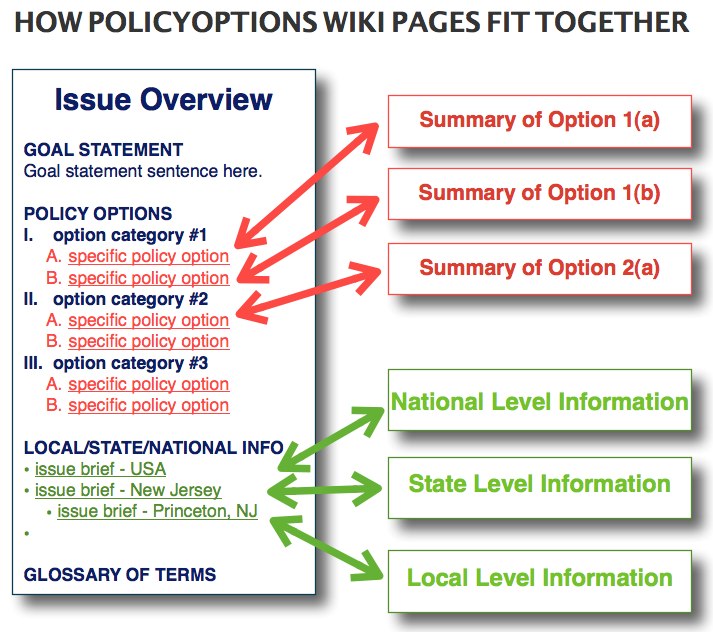Front Page / Guides / PolicyOptions Issue Brief Guide / Issue Brief Structure & Templates
Issue Brief Structure & Templates
The PolicyOptions Issue Briefs seek to answer four fundamental questions related to a public policy issue:
- What is the nature & extent of the problem?
- What’s been tried in the past to address it?
- What’s being done now?
- What are the distinctly different approaches to addressing this issue?
Answers to these questions are contained in the following outline for the PolicyOptions issue brief template:
- Goal Statement
- Scope of the Problem
- Past Policy and Program Milestones
- Current Policy and Programs
- Policy Options and Model Programs
- Key Organizations/Individuals
- Glossary of Terms
- Bibliography
Each issue brief should have an overview page, local/state/national information pages, and policy option/model program pages. We use three distinct template pages to piece together the content for the issue briefs:

- Local/State/National Issue Information: These page(s) contain the geographically-focused content on the issue for the following sections:
- scope of the problem — factual statements on the extent of the problem in the past, current, or future
- past policy — key legislation and milestones including significant policy and funding shifts, major studies, etc.
- current policy — summary of current policies in the form of legislation, programs, and funding
- key organizations/individuals — contacts for public and private organizations and key individuals
- bibliography — web sites, reports, articles, and other reference material


This approach allows the researchers to eliminate the need to repeat the goal statement, glossary of terms, and policy option or model programs in each of the geographically-focused issue brief pages. This is illustrated in the following graphic which shows how these sections are common to issue briefs on this topic whether they are focused on the local, state, national or global level:

However, when the user is ready to prepare a printable-versions of an issue brief they will use either a Microsoft Word or Powerpoint template we will be developing, into which they will copy the content from the issue overview page and the content from the geographically-focused issue brief page into a unified presentation.
See How to Use This Wiki for directions on creating new wiki pages using the built-in templates described in this section. Below is a graphic illustration of how the pages fit together:

Comments (0)
You don't have permission to comment on this page.